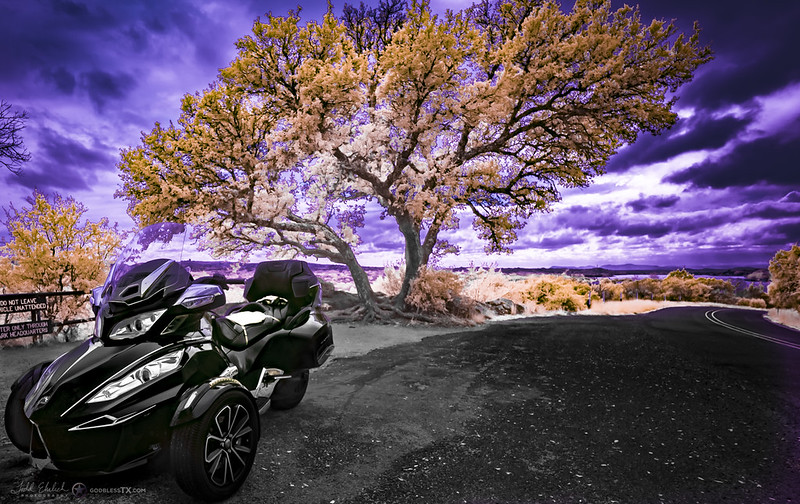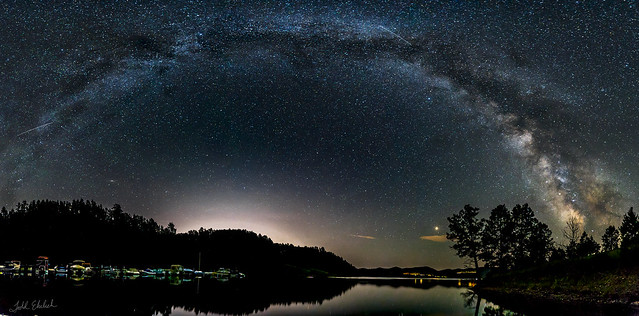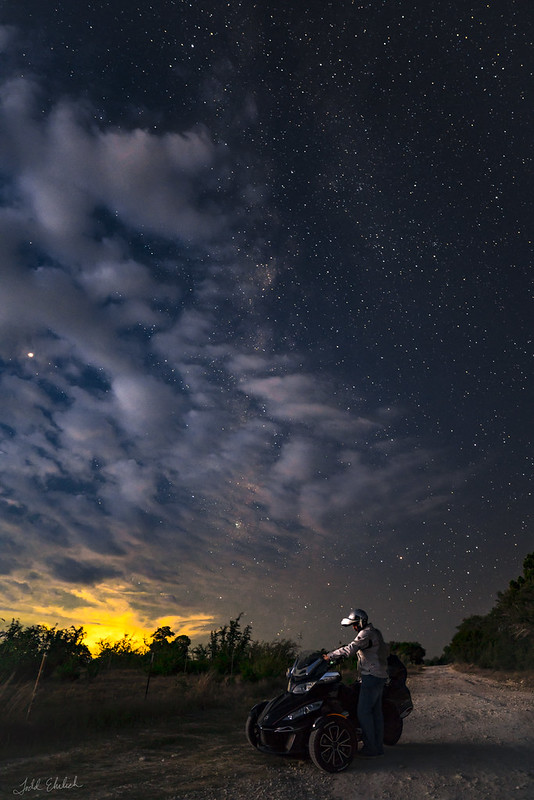-
There were many reasons for the change of the site software, the biggest was security. The age of the old software also meant no server updates for certain programs. There are many benefits to the new software, one of the biggest is the mobile functionality. Ill fix up some stuff in the coming days, we'll also try to get some of the old addons back or the data imported back into the site like the garage. To create a thread or to reply with a post is basically the same as it was in the prior software. The default style of the site is light colored, but i temporarily added a darker colored style, to change you can find a link at the bottom of the site.
You are using an out of date browser. It may not display this or other websites correctly.
You should upgrade or use an alternative browser.
You should upgrade or use an alternative browser.
How to Check the Safety Card at Night!
- Thread starter tehrlich
- Start date
Bob Denman
New member
:shocked: Did anybody else just hear a twig snap behind us? :yikes:
GREAT picture!!:clap::firstplace:
GREAT picture!!:clap::firstplace:
tehrlich
New member
Great pic but don't have that view so have to use the old flashlight. ..:roflblack:
I see that you're in San Diego. Yes, you do with a little drive!
Last year I had a lecture in SD, and after our dinner I drove my rental car to the Jacumba Mountains. It is near the border of CA, AZ, and Mexico. Took a bunch of pictures, drove all the way back to SD airport, and made my 6am flight back to Texas! Was quite the night!
 Jacumba Rumba by Todd Ehrlich, on Flickr
Jacumba Rumba by Todd Ehrlich, on FlickrBob Denman
New member
That's a pretty disrespectful question to ask; don't you think?
Here we go with the thought police.:banghead:
I'm into photography and those pictures look amazing and want to know if they are enhanced in any way.:thumbup:
Photographers will often enhance a picture because not all scenes can be captured like the naked eye can.
Damn I wish people like you would just bugger off. nojoke
I'm into photography and those pictures look amazing and want to know if they are enhanced in any way.:thumbup:
Photographers will often enhance a picture because not all scenes can be captured like the naked eye can.
Damn I wish people like you would just bugger off. nojoke
That's a pretty disrespectful question to ask; don't you think?
Bob Denman
New member
tehrlich
New member
They are not "Photoshopped." I use Adobe Lightroom to give it more dynamic range.
People! Professional photographers use Lightroom, and similar programs, all the time.
Cameras are not eyes, and eyes are not cameras. Our eyes have a great dynamic range: they can see detail in the darks while being exposed to the lights. Cameras, on the other hand, do not have high dynamic range. They are set for lights or darks, generally. Filters can be utilized and programs like Lightroom.
However, cameras can set to be more sensitive to light (ISO, aperture, time of exposure) than human eyes. That doesn't necessarily mean it is not "real."
I have an infrared camera as well. Our eyes don't see it this way, but something might!
 Infrared Spyder Park Road 4 by Todd Ehrlich, on Flickr
Infrared Spyder Park Road 4 by Todd Ehrlich, on Flickr
People! Professional photographers use Lightroom, and similar programs, all the time.
Cameras are not eyes, and eyes are not cameras. Our eyes have a great dynamic range: they can see detail in the darks while being exposed to the lights. Cameras, on the other hand, do not have high dynamic range. They are set for lights or darks, generally. Filters can be utilized and programs like Lightroom.
However, cameras can set to be more sensitive to light (ISO, aperture, time of exposure) than human eyes. That doesn't necessarily mean it is not "real."
I have an infrared camera as well. Our eyes don't see it this way, but something might!
 Infrared Spyder Park Road 4 by Todd Ehrlich, on Flickr
Infrared Spyder Park Road 4 by Todd Ehrlich, on Flickrtehrlich
New member
As far as camera settings... All cameras, and definitely brands, have different attributes.
I use Sony Alpha cameras: A7Sii, A7Rii, and A6300's as backups. These were all taken with a Zeiss Batis 2.8/18 lens.
A Sony A7Sii can literally see in the dark. It is a full framed camera which means that the sensor is the same size as the good ol' fashion film days: 35mm. The sensor in this camera is only a 12 million pixel camera. Camera phones have that kind of resolution, but the PIXELS on the sensor are huge. Therefore, they are very light sensitive.
My Sony A7Rii is a full framed camera, too, but it is high resolution: 42 million pixels. It is an amazing camera. Amazing. It came out a few years ago and are going down in price. I see them on Craigslist all the time.
This was taken with my A7Sii with about 15 vertical wide angle shots, and then spliced together for the panorama.
 Milky Way Reservoir Pano Low Res by Todd Ehrlich, on Flickr
Milky Way Reservoir Pano Low Res by Todd Ehrlich, on Flickr
I use Sony Alpha cameras: A7Sii, A7Rii, and A6300's as backups. These were all taken with a Zeiss Batis 2.8/18 lens.
A Sony A7Sii can literally see in the dark. It is a full framed camera which means that the sensor is the same size as the good ol' fashion film days: 35mm. The sensor in this camera is only a 12 million pixel camera. Camera phones have that kind of resolution, but the PIXELS on the sensor are huge. Therefore, they are very light sensitive.
My Sony A7Rii is a full framed camera, too, but it is high resolution: 42 million pixels. It is an amazing camera. Amazing. It came out a few years ago and are going down in price. I see them on Craigslist all the time.
This was taken with my A7Sii with about 15 vertical wide angle shots, and then spliced together for the panorama.
 Milky Way Reservoir Pano Low Res by Todd Ehrlich, on Flickr
Milky Way Reservoir Pano Low Res by Todd Ehrlich, on FlickrBob Denman
New member
They just all look great to me!:thumbup: :bowdown:
That what I thought also. I forgot that I had one of those things. Haven't seen it in 3 yrs.What card?:joke:
tehrlich
New member
But generally, for Milky Way shots you would need:
A digital camera. No need for an expensive one.
Wide angle lens.
Tripod. The hardest thing to do is get focus of the stars. Can't touch the camera when it fires.
Remote switch to activate the shot, OR just have it on a delay. I do a 2 second delay.
I set my camera typically at:
F2.8
ISO 1600-3200
15-20 seconds exposure.
Then the timing of it is really key. You have to know WHERE the Milky Way is. You have to be in the "season of the Milky Way." Typically March -October for North America.
The Moon cannot be in the sky! It floods the sky with light. I use a phone app called "Photo Pills." It is just amazing. Worth every penny to know Sun position, Moon position, MW position, angles, and timing. You literally can know when the sunset will cross a certain building or structure on the day you look it up. Moon, too.
You have to be away from as much light pollution as possible. Hard to do, if not impossible to do on the east coast of the US.
I'm VERY jealous of the photographers I follow in AUSTRALIA!!! They get a great view of the Milky Way and have very dark areas. They don't know how to inflate Spyder tyres, but they can throw down a pint! LOL!!
Lastly, you have to get off of the couch and go take the pictures!
With all of this said, this is one reason why I bought a Spyder! It carries all of my gear easily and is safe to drive when I'm out in the dark. The only thing I'm worried about when I'm out in the dark by myself is a ZOMBIE APOCALYPSE and I can't get my Spyder started fast enough because of the damned safety card check!
A digital camera. No need for an expensive one.
Wide angle lens.
Tripod. The hardest thing to do is get focus of the stars. Can't touch the camera when it fires.
Remote switch to activate the shot, OR just have it on a delay. I do a 2 second delay.
I set my camera typically at:
F2.8
ISO 1600-3200
15-20 seconds exposure.
Then the timing of it is really key. You have to know WHERE the Milky Way is. You have to be in the "season of the Milky Way." Typically March -October for North America.
The Moon cannot be in the sky! It floods the sky with light. I use a phone app called "Photo Pills." It is just amazing. Worth every penny to know Sun position, Moon position, MW position, angles, and timing. You literally can know when the sunset will cross a certain building or structure on the day you look it up. Moon, too.
You have to be away from as much light pollution as possible. Hard to do, if not impossible to do on the east coast of the US.
I'm VERY jealous of the photographers I follow in AUSTRALIA!!! They get a great view of the Milky Way and have very dark areas. They don't know how to inflate Spyder tyres, but they can throw down a pint! LOL!!
Lastly, you have to get off of the couch and go take the pictures!
With all of this said, this is one reason why I bought a Spyder! It carries all of my gear easily and is safe to drive when I'm out in the dark. The only thing I'm worried about when I'm out in the dark by myself is a ZOMBIE APOCALYPSE and I can't get my Spyder started fast enough because of the damned safety card check!
RapidSpyder
Well-known member
Does that phone have even have a camera?
it’s probably black and white...
youngers
New member
wait a sec.....
man that guy sold me a dud ! hahhahahaDoes that phone have even have a camera?
Similar threads
- Replies
- 7
- Views
- 669
- Replies
- 3
- Views
- 1K
- Replies
- 10
- Views
- 2K
- Replies
- 6
- Views
- 837
- Replies
- 38
- Views
- 4K


